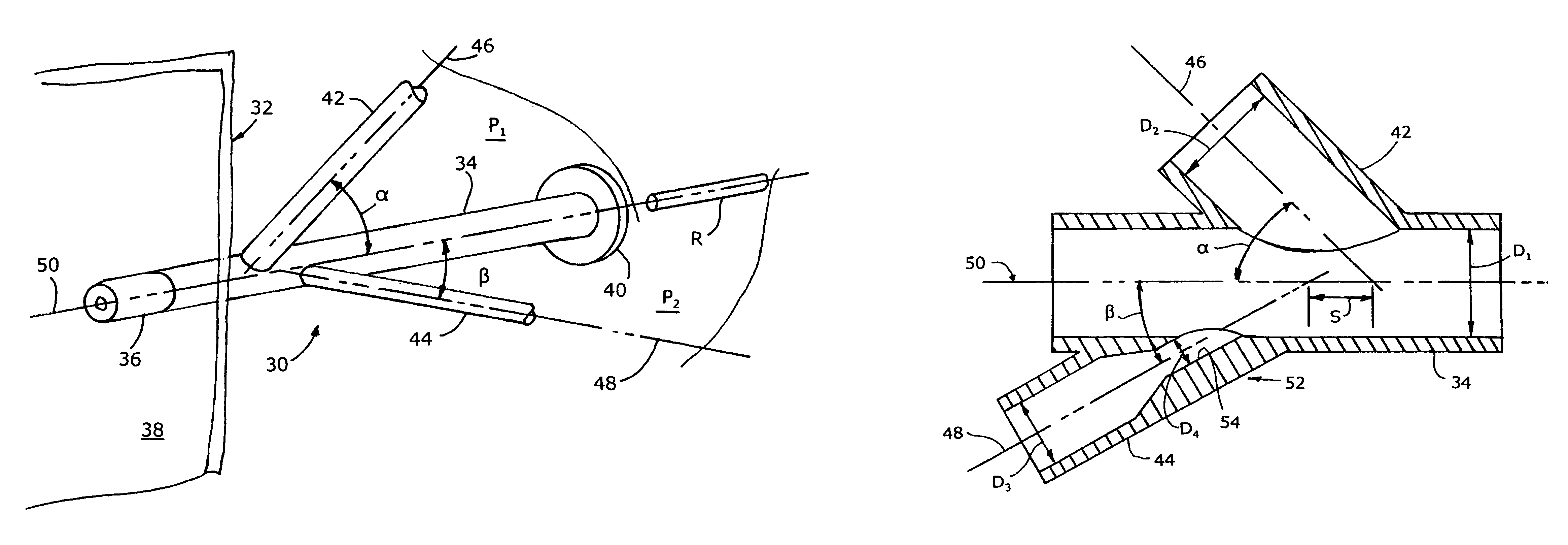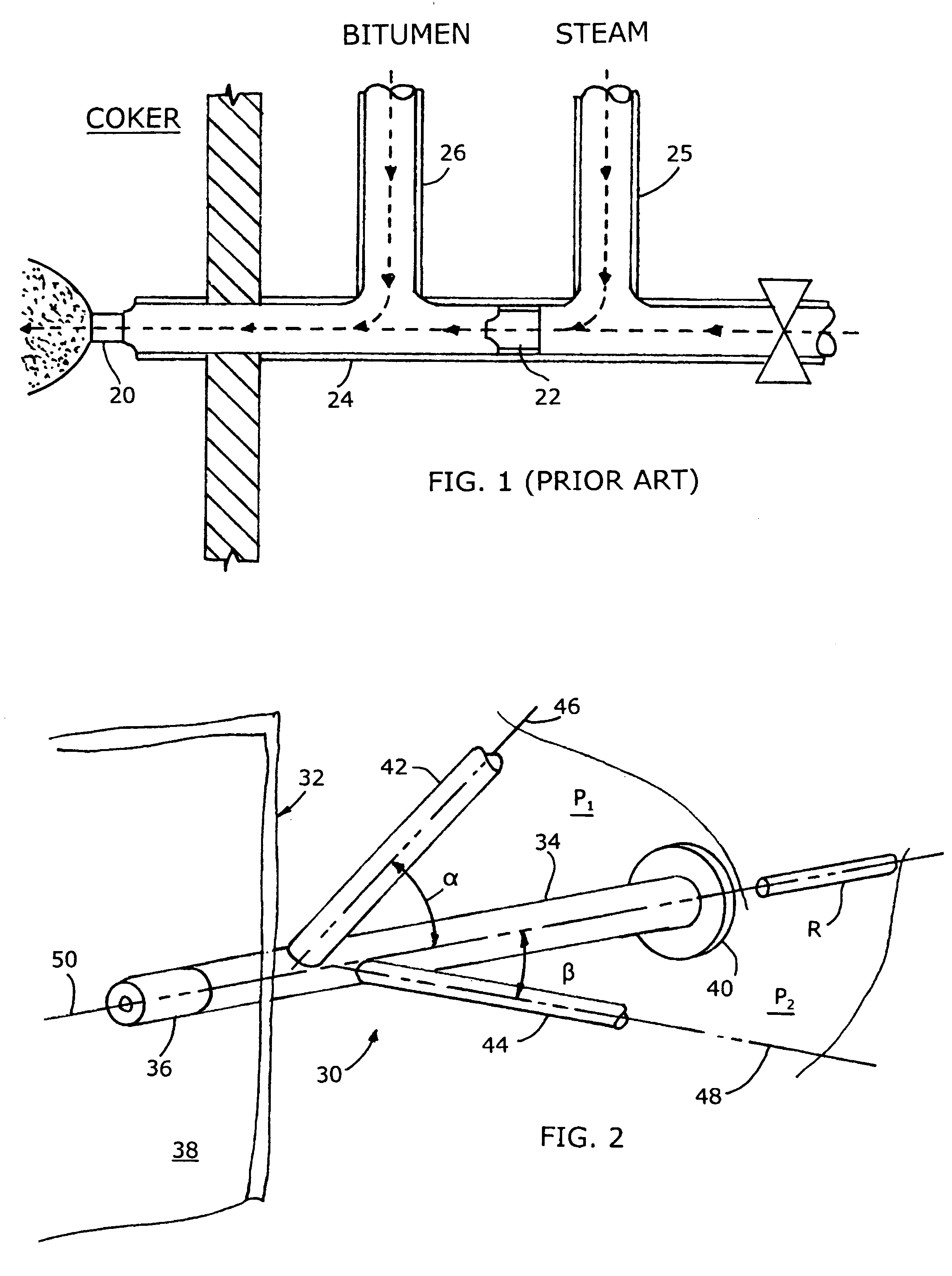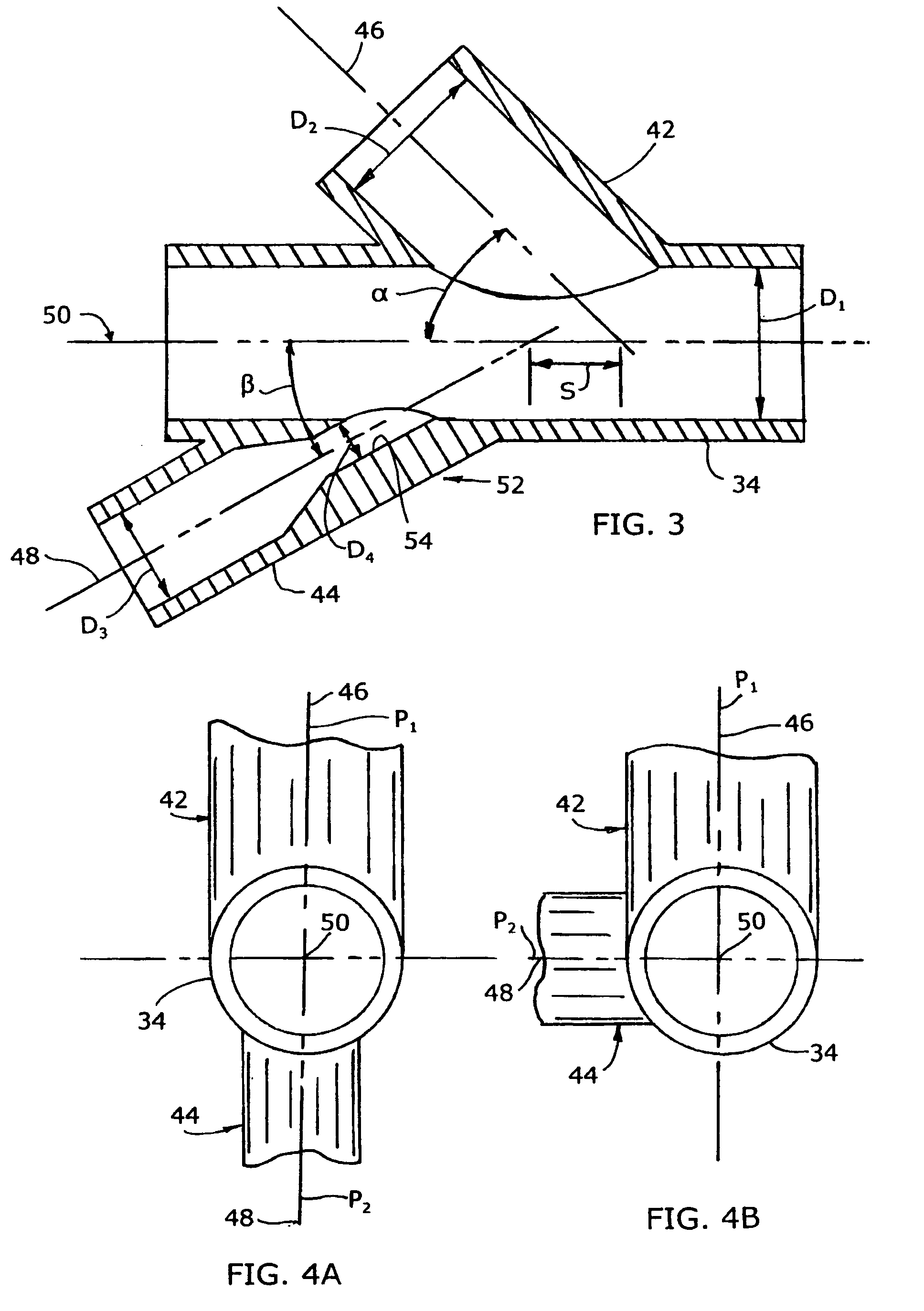Mixing arrangement for atomizing nozzle in multi-phase flow
a technology of atomizing nozzle and mixing arrangement, which is applied in the direction of charging-discharging device combination, combustion type, lighting and heating apparatus, etc., can solve the problems of significant degradation of atomization efficiency, achieve easy processing, improve flow characteristics, and smoke-free bitumen transition
- Summary
- Abstract
- Description
- Claims
- Application Information
AI Technical Summary
Benefits of technology
Problems solved by technology
Method used
Image
Examples
Embodiment Construction
[0016]FIG. 1 as discussed above illustrates a prior art mixing arrangement in which both the bitumen and steam conduits (26, 25) meet the main conduit 24 at right angles, the bitumen and steam conduits being generally parallel to each other.
[0017]FIG. 2 illustrates a mixing arrangement 30 in accordance with the present invention, as utilized with a reactor or coker 32. The mixing arrangement of this invention includes a main conduit 34 connected at a proximal end thereof to an atomizing nozzle 36 that is fixed in a wall 38 of the reactor. The atomizing nozzle 36 does not form a part of the present invention and can be one similar to the one disclosed in the aforementioned U.S. Pat. No. 6,003,789. At the distal end of the conduit 34 is a valve or closure member 40 which can be opened to admit a cleaning rod R, used to push any bitumen that might be clogging the conduit 34 through the conduit and the atomizing nozzle into the reactor. Normally the closure member 40 will be closed duri...
PUM
| Property | Measurement | Unit |
|---|---|---|
| angle | aaaaa | aaaaa |
| angle | aaaaa | aaaaa |
| angle | aaaaa | aaaaa |
Abstract
Description
Claims
Application Information
 Login to View More
Login to View More - R&D
- Intellectual Property
- Life Sciences
- Materials
- Tech Scout
- Unparalleled Data Quality
- Higher Quality Content
- 60% Fewer Hallucinations
Browse by: Latest US Patents, China's latest patents, Technical Efficacy Thesaurus, Application Domain, Technology Topic, Popular Technical Reports.
© 2025 PatSnap. All rights reserved.Legal|Privacy policy|Modern Slavery Act Transparency Statement|Sitemap|About US| Contact US: help@patsnap.com



